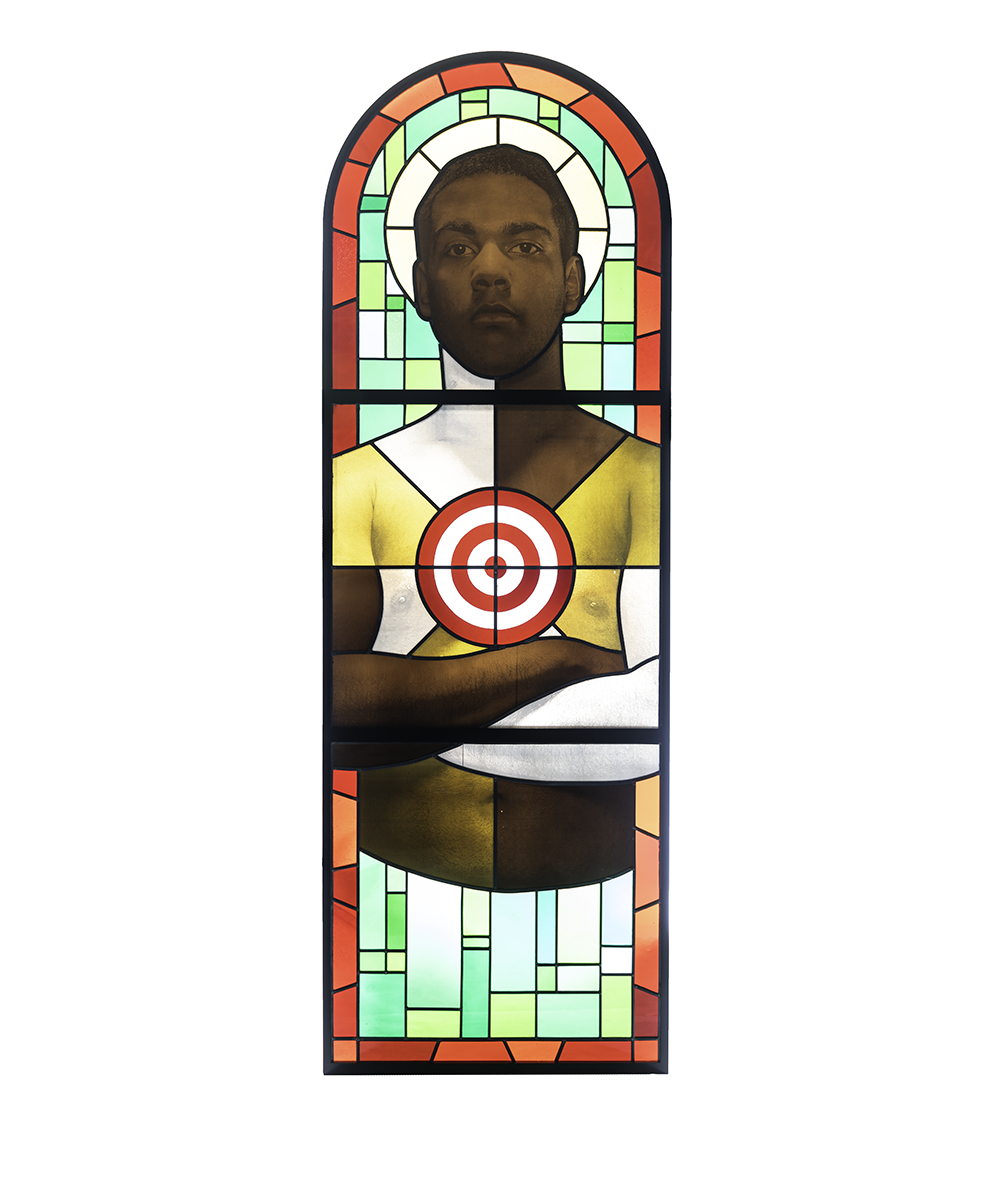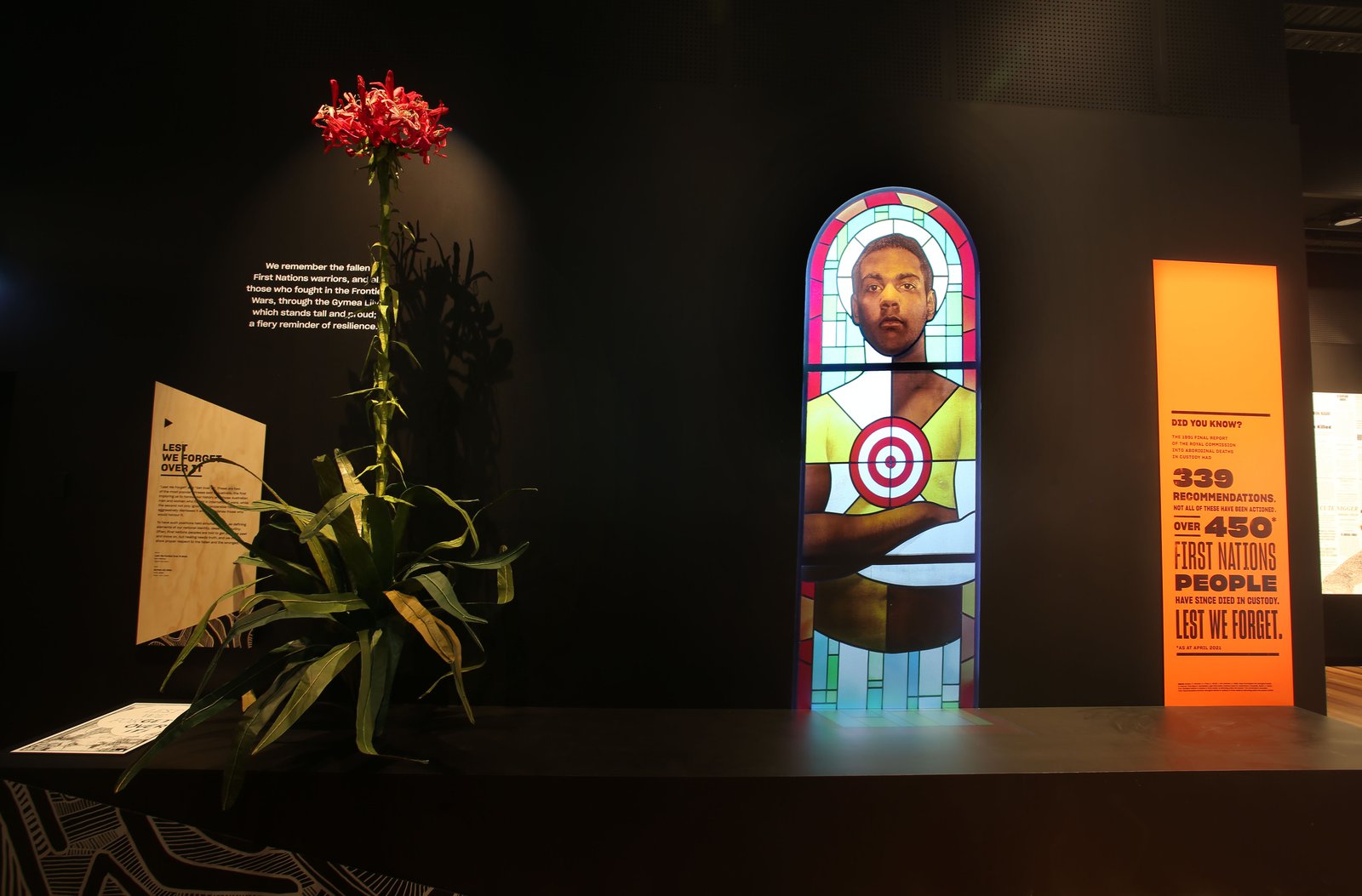Brothers (The Prodigal Son II) 2020
On this page...
Curators’ acknowledgement
“We pay our respects and dedicate the Unsettled exhibition to the people and other Beings who keep the law of this land; to the Elders and Traditional Owners of all the knowledges, places, and stories in this exhibition; and to the Ancestors and Old People for their resilience and guidance. We advise that there are some confronting topics addressed in this exhibition, including massacres and genocide. Aboriginal and Torres Strait Islander peoples should be advised that there may be images of people who have passed away.”
Laura McBride and Dr Mariko Smith, 2021.

Brothers (The Prodigal Son II) 2020
Tony Albert, Girramay, Kuku Yalanji
Glass, lead, photographic decal, steel, stone
Australian Museum Collection Acquisition.
© Australian Museum
Brothers (The Prodigal Son II) 2020
Tony Albert, Girramay, Kuku Yalanji
Glass, lead, photographic decal, steel, stone
Australian Museum Collection Acquisition.
At a protest in 2012 held in response to an incident of police brutality against a group of young Aboriginal men in Sydney’s Kings Cross, artist Tony Albert saw several male Aboriginal teenagers remove their shirts to reveal red targets painted on their chests.
This decorative embodiment of racialised targeting and the over-policing of Aboriginal people inspired Albert to create the Brothers photographic series, and now glasswork series, The Prodigal Son. This series takes the imagery of these targeted men and transforms them into commanding representations usually reserved for those in positions of privilege.
We are constantly wearing a target as people, but I guess with this optimistic twist that though we are wearing that target how, why, where and when can we change it? Tony Albert, Girramay, Kuku Yalanji, 2019.

Brothers (The Prodigal Son II) 2020
Tony Albert, Girramay, Kuku Yalanji
Glass, lead, photographic decal, steel, stone
Australian Museum Collection Acquisition.
© Australian Museum

